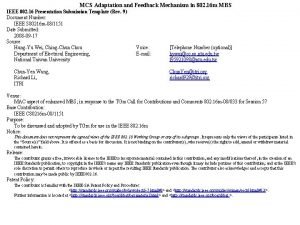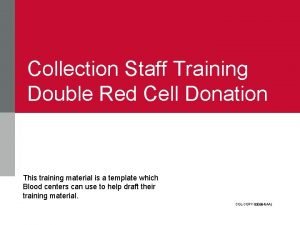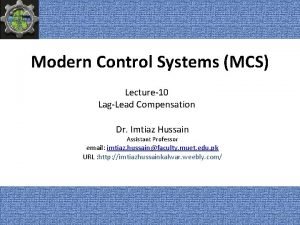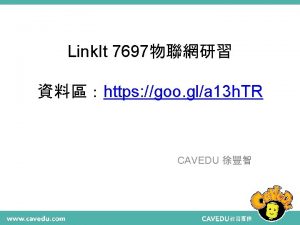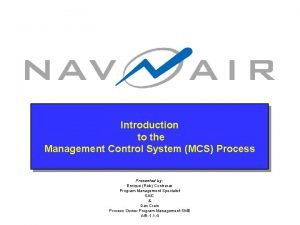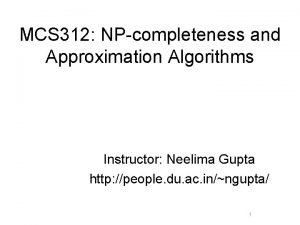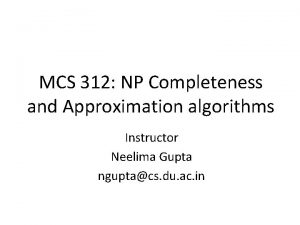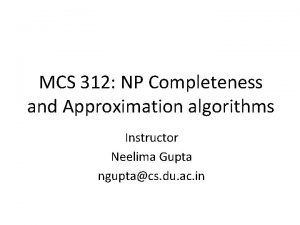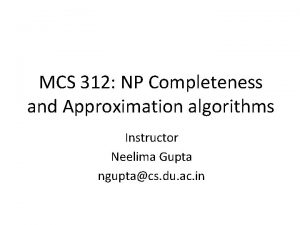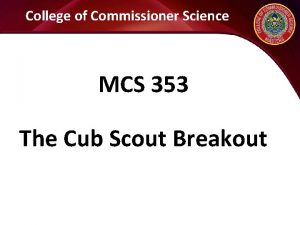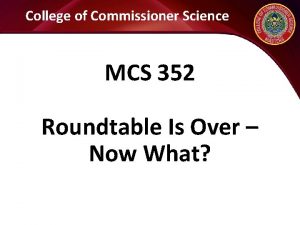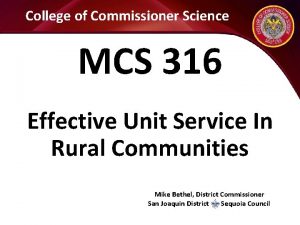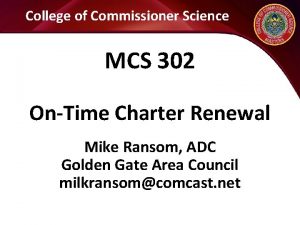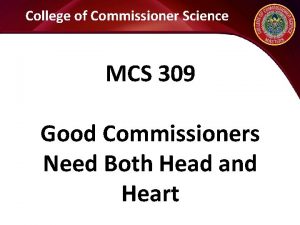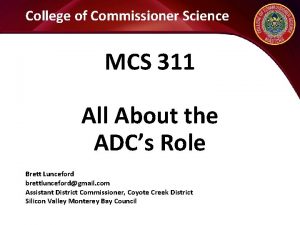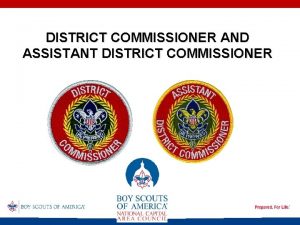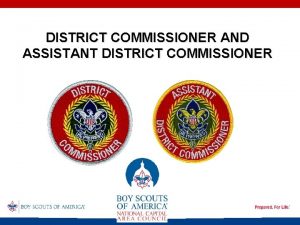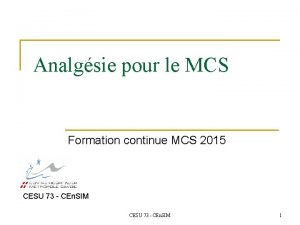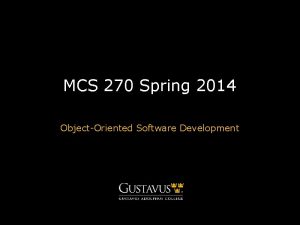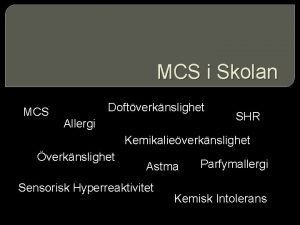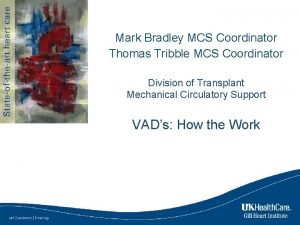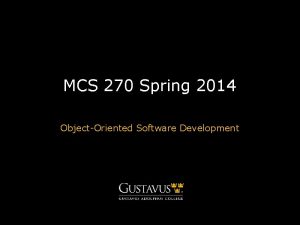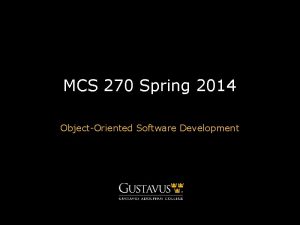College of Commissioner Science MCS 304 Commissioner Service


















- Slides: 18

College of Commissioner Science MCS 304 Commissioner Service for Units at Risk Bruce Mc. Gurk, UC/District Chair Feb. 27, 2021 Norcal Commissioner College 1

Objectives –Handout 1 – Be able to: • Identify the symptoms of a unit at risk. • Determine possible causes of the problem. • Describe approaches to solve the problem. • Use Commissioner Tools to clearly report to the ADC/DC unit problems and needs.

Service to Units at Risk • You have been called by the district commissioner saying he has been told Pack 259 is having critical issues. What do you do?

The Process – Handout 2 • Recognize there is a problem. • Identify cause of the problem (investigate) • Determine action (with consultation). • Act!!! • Review results and adjust. • Continue to monitor.

Recognize There is a Problem How do you know there is a problem? What are signs of a unit at risk?

Some of the signs of Unit in trouble • • Youth dropping out, few youth, no youth leaders No recruiting, or poor recruiting methods & results No discipline, no planned program Little adult leadership, one adult doing everything No parent involvement, inactive committee Adult conflicts & poor communication, youth conflicts Unit stops meeting, stops doing activities Charter lapse, charter organization unhappy with unit

Form a Team – Handout 5 • Why a team? • What is this team going to look like?

Some Issues You Might See

What will you find? • • Things you find can be a symptom or the problem – decide Unit leader is going to quit No replacement, parents propose rotating leader role Unit has fewer than 15 members, and of similar ages Unit does not meet Parents are angry at other parents or leader Unit is in disarray – no committee, no program delivery Parents threatening to pull child from Scouting • HOW DO YOU GATHER THIS INFORMATION?

Talk To Everyone and Listen http: // akelasc ouncil. blogspo t. co. uk / 2012/0 8 p 6 o elrosetro ww. m http: //w cg. c ster a m out ts/ : //sc ic-even s p t ht rag ut-t abo uts- co ith-s w ing- talk om/ er ast =scoutm g/? tag 8. org/blo https: //b log. scou tingmag azine. org /2015/0 1/09/soa wkward/

Communication steps, 1 • Talk and LISTEN to all parties, share load with Team • Don’t take notes while talking with them, it makes people nervous – do it right after by scheduling breaks • Ask open-ended questions – what do they think is wrong, how would they solve it, who is helping, who is not, get specific events and see it they lead to the PROBLEM • Re-state what you heard to each person, and ask if you got it right, and do they have more to add, thank them • Summarize the findings from each in Commissioner Tools – observations, conclusions, possible solutions • This allows the ADC/DC to monitor and offer targeted help

Communications steps, 2 • Talk to Key 3, esp. if you are going in blind • COR will often be unaware of issues – they just sign • SM/CM or CC may be most familiar, but be aware that they may be part of the problem • Arrange to attend a unit meeting, arrive early, and watch, ask if you can talk to individual boys and parents • If Committee meeting called, attend ask CC to explain the “problem” to all, ask for opinions about if there other problems, what are possible solutions. Restate info. • Have your Team at the meetings • Enter findings in Commission Tools, consult with ADC/DC

Determine Action Consult with others

Prepare a Unit Service Plan – Handout 6

Act!!! Going into action • What is your Priority? • As a Commissioner, that unit is top priority • Attend meetings, be encouraging • Note successes, but recognize problems • When do you act? • NOW – don’t wait, get started

Follow Up – Handout 7 • Monitor the Unit, Review Results, and Adjust • Continue to Monitor • Discuss with Key 3 • Update Unit Plan, inform DC/ADC

Test Cases • The following are cases where lifesaving may be needed. Use these as examples and decide how to solve the issue. • Your instructor may add information as you discuss the situation.

Service to Units at Risk That’s all, folks! brucemcgurk@comcast. net


